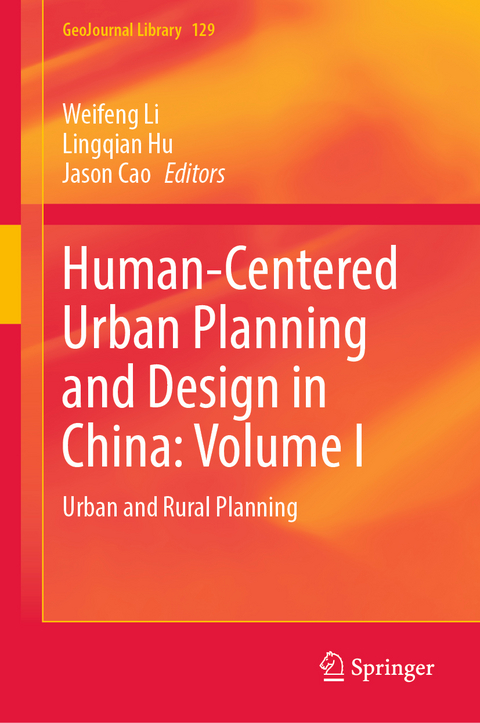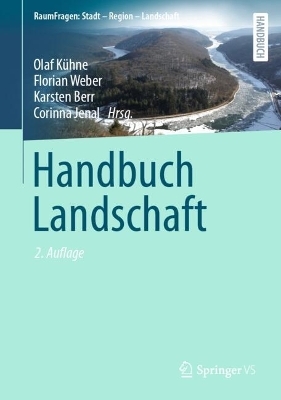
Human-Centered Urban Planning and Design in China: Volume I
Springer International Publishing (Verlag)
978-3-030-83855-3 (ISBN)
This book explores a more human-centered development pathway associated with the ideological shift from "quantity" to "quality" growth in the new era of Chinese urbanization. Sustainable urban and rural planning should be "people-centered" and concerned about urban-rural coordination. The authors argue that successful urban and rural development in China should promote social equity, culture diversity, economic prosperity and sustainable built form. This book prompts Chinese urbanists to reconsider and explore a sustainable and people-first planning approach with Chinese characteristics. The breadth and depth of this book is of particular interest to the faculty members, students, practitioners and the general public who are interested in subjects like urban and regional planning, rural planning, housing and community development, infrastructure planning, climate change and ecological planning, environmental planning, social equity and beyond.
This book dealing with human-centered urban planning and development, rural planning and urban-rural coordination in China is part of a 2 volume set. Volume II discusses human-centered urban design and placemaking, human activities and urban mobility.
lt;p>Weifeng Li is an Associate Professor in the Department of Urban Planning and Design at the University of Hong Kong. Dr. Li received his Ph.D. in Urban and Regional Planning from Massachusetts Institute of Technology (MIT). He also holds both a Master's degree and a bachelor's degree in Geography from Peking University, China. His research interests focus on environmental sustainability, urbanization and environmental changes, land use-transportation planning interactions and the environmental and energy impacts, as well as the use of GIS and spatial analysis in urban planning. Currently he is working on neighborhood design and energy efficiency funded by Research Grants Committee in Hong Kong and built environment and air quality funded by NSF of China. Dr. Li was a board member of the International Association for China Planning (IACP), 2013-2017.
Lingqian Hu is Chair of the Department of Urban Planning, School of Architecture & Urban Planning at The University of Wisconsin-Milwaukee. Prof. Hu received her Bachelor of Planning degree from Nanjing University in China and a Master of Planning and doctorate in Policy, Planning, and Development from the University of Southern California. As a professor of urban planning, She teaches courses on transportation and land use planning, urban development theories, and transportation and GIS. Prof. Hu is also the chair of the International Association for China Planning (IACP).
Jason Cao is a professor of urban planning in the Humphrey School of Public Affairs, University of Minnesota, Twin Cities. He received a Ph.D. degree from University of California, Davis. His research interests include land use and transportation interactions, the impacts of ICT on travel behavior, and planning for subjective well-being. He is internationally well-known for his research in addressing residential self-selection in the relationships between land use and travel behavior and exploring nonlinear associations with travel behavior through machine learning. He is an Editor-in-Chief of Transportation Research Part D: Transport and Environment (2018-2023). He was the chair of International Association for China Planning (2015-2017).
Part I: Urban planning and development.- Chapter 1. On Chinese Approach to Theoretical Study of Urban Growth Boundary (UGB)(Hui Li, Yiling Hua, Yadong Li, Yu Zhang, Zhiying Li, Honghong Fan and Jiahao Ren).- Chapter 2. The Spatial Planning Technology Innovation of the Smart City under Knowledge Economy and Ecological Sustainability(Le Che, Yinquan Luo, Yangfang Hu and Sheng Yao).- Chapter 3. Chinese Traditional Ecological Wisdom and Contemporary Sustainable Landscape Art(Yan Huang).- Chapter 4. Spatial-temporal Variations of Green Space in Metropolitan Area: The Case of Wuhan, China(Chun Li, Zhiyong Wang and Tixing Yang).- Chapter 5. Relationship among Fractional Vegetation Cover, Land use and Urban Heat Island Using Landsat 8 in Taipei, Taiwan(Mu-En Chang, Zhi-Qing Zhao and Hsiao-Tung Chang).- Chapter 6. Ecological perspective of the evolution of urban spatial form and construction: case study of Hefei city(Huifen Huang and Dazhi Gu).- Chapter 7. Study of the Ecological Adaptive Mechanism of Traditional Human Settlements in Sichuan Tibetan Areas Based on a Cultural Perspective(Linglan Bi, Xuejin Liu and Zhengjun Zhang).- Chapter 8. Study Analysis of The Influence of Tibetan Buddhism on The Formation and Development of Urban Areas in Mongolia Region in Qing Dynasty(Chong Liu and Ying Han).- Chapter 9. A Method of Discovering Urban Functional Zones Based on Poi Feature Vector and Network Kernel Density(Shiwei Shao, Hui Liu and Lin Lu).- Chapter 10. Evaluation Methodology on Industry-city Integration Degree of China National High-Tech Industrial Development Zones: A Case Study of Hubei Province(Pei Chen and Yaping Huang).- Part II: Rural planning and urban-rural coordination.- Chapter 11. Urban-rural Coordination in Shaoxing: Small and Medium Towns Development during Urban-rural Relationship Transformation(Wenting Jiang, Jian Liu and Xiaoxuan Li).- Chapter 12. Spatial growth of urban and rural construction land and policy impact mechanism in Hangzhou(Haiyan Pang and Yonghua Li).- Chapter 13. Study on China's Adaptation Policies to Climate Change from the View of Urban and Rural Planning(Yuan Huang and Yanxiao Pan).- Chapter 14. Considerations on Urban-Rural Relationship and Planning Philosophy from the Perspective of Rural Planning in Contemporary China- Discussion on the Existing Problems in Rural Planning Education(Fan Yang, Tianyang Zhou and Jiehao Zhu).- Chapter 15. Obstacles and Opportunities for Characteristic Town Development in Central China Area: Hubei Province Case Study(Shuting Yan, Toshikazu Ishida, Mamiko Fujiyama and Xilin Zhou).- Chapter 16. Research on the Shaping of Landscape in Rural Cultural Heritage Based Areas Using the Optimal Solution Model(Yu Guo, Zhenya Chen, Lingqing Zhang, Jing Yan, Wenfeng Fu, Ying Cao and Xiaohong Tang).- Chapter 17. An Argument Concerning Rural Planning in Contemporary China from the Perspectives of Law, Institutional Practice and Implementation Methods(Jiehao Zhu, Fan Yang and Tianyang Zhhou).
| Erscheinungsdatum | 17.11.2021 |
|---|---|
| Reihe/Serie | GeoJournal Library |
| Zusatzinfo | XII, 291 p. 180 illus., 154 illus. in color. |
| Verlagsort | Cham |
| Sprache | englisch |
| Maße | 155 x 235 mm |
| Gewicht | 613 g |
| Themenwelt | Naturwissenschaften ► Geowissenschaften ► Geografie / Kartografie |
| Sozialwissenschaften ► Soziologie | |
| Schlagworte | Built Environment and Housing • Chinese Approach to Urban Growth Boundary • Chinese urbanization • Environmental and Ecological Planning • GIS • Green Space in Metropolitan Area • Health Cities • High-Tech Industrial Development Zones • Housing and Community Development • smart cities • Spatial Planning Technology Innovation • sustainable development • Traditional Human Settlements • Urban and Spatial Planning • Urban Dwellers • Urban Functional Zones • Urban Lifestyle • Urban Planning and Development • Urban space • Urban Spatial form and Construction |
| ISBN-10 | 3-030-83855-2 / 3030838552 |
| ISBN-13 | 978-3-030-83855-3 / 9783030838553 |
| Zustand | Neuware |
| Haben Sie eine Frage zum Produkt? |
aus dem Bereich


